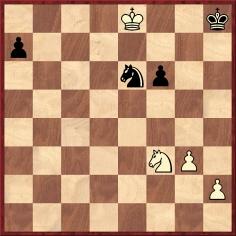
Edward Winter

White to move
In C.N. 1715 Kenneth Neat (Durham, England) drew our attention to this position, discussed on page 35 of Kapablanka v Rossii by V. Linder and I. Linder (Moscow, 1988). The co-authors quoted an account by Romanovsky in Shakhmaty v SSSR 1959 No. 6 of a simultaneous display by Capablanca in St Petersburg on 24 November 1913 (old style), in which he scored +24 –3 =3. The relevant extract from the book is given below, in Dr Neat’s translation:
‘A more tenacious resistance to Capablanca was offered by Kalantarov, one of Romanovsky’s friends from the Polytechnic Institute. [In the above position] it was the grandmaster’s turn to move. Kalantarov and his consultants, including Romanovsky, expected 46 Ke7, since they thought that after 46 Kf7 the knights would be exchanged, and the pawn ending would favour Black. Great was their astonishment when Capablanca nevertheless played his king to f7. The players rapidly made two more moves each: 46...Ng5+ 47 Nxg5 fxg5 48 g4! “This move”, recalls Romanovsky, “as well as all those following, was made instantly by Capablanca.” When the Cuban had moved away from the board, they began calculating variations, and saw that in the event of 48...a5 White would continue 49 h4 gxh4 50 g5, when the g-pawn decides the game in his favour. Therefore there followed: 48...Kh7 49 h4 Kh6 50 Kf6! (if now 50...gxh4 then 51 g5+ Kh7 52 Kf7 h3 53 g6+ and White wins) 50...Kh7 51 h5! a5 52 Ke5 Resigns.’
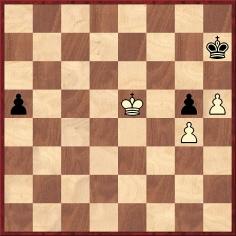
Subsequently, in C.N. 1741, René Olthof (Rosmalen, the Netherlands) wrote:
‘I used C.N. 1715 in one of my training sessions and now I think the position is nothing special.
First of all, 48 g4! is not necessary at all. In fact, the normal 48 h4 is much easier, viz. 48...g4 49 Ke6 a5 50 Kd5 or 48...gxh4 49 g4 h3 50 g5 h2 51 g6 h1(Q) 52 g7+ Kh7 53 g8(Q)+ Kh6 54 Qg6 mate.
Of course, 46...Ng5+ is horrendous. After normal moves like 46...Ng7 I consider the position to be drawn, since the outside passed a-pawn is too troublesome for White. Hence, 46 Ke7 and 46 Kf7 are objectively equal, since neither is enough to win. (46 Kf7 does set a trap, though.)’
A dozen years later Karsten Müller (Hamburg, Germany) wrote to us (in C.N. 2402):
‘I disagree with Mr Olthof. I think that 46 Kf7 was clever as it set a trap which was not at all easy to spot. Furthermore 48 g4! is the only move that wins the pawn ending. 48 h4? g4! 49 Ke6 a5 50 Kd5, as proposed by Mr Olthof, leads only to a draw, with 50...Kg7 51 Kc4 Kf6 52 Kb5 Ke6 53 Kxa5 Ke5!, as Black can maintain the (distant) opposition. So I consider Capablanca’s play in the knight ending a great achievement for a simultaneous display.’
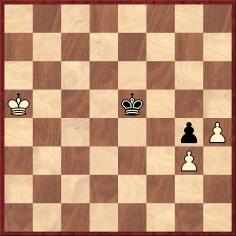
Position after 53...Ke5
We searched our database and found two games (a win and a draw) with the identical (mirror-image) position as at the end of Karsten Müller’s distant opposition line. A comparable position, though with the kings located elsewhere, arose in the fourth match-game between Staunton and Williams, London, 1851. On page 330 of his book on the London, 1851 tournament Staunton pointed out that the decisive mistake was 56 Ke5. ‘56 Ke4 would have maintained the opposition, and drawn secundum artem. The move in the text enables [Black] to win!’
Acknowledging the correctness of Karsten Müller’s remarks, René Olthof pointed out, concerning the above-mentioned win in the database, that the defender gave away the opposition twice:
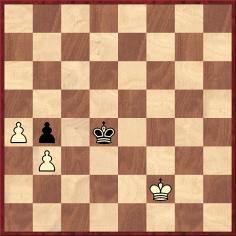
E. Schmittdiel v N. Heck, Bad Zwesten, 1997
65 Kf3 Kd5 66 Kg3 Ke5 67 Kh2 Ke4 (67…Kd4 keeps the opposition) 68 Kh3 (nor does the consistent move 68 Kg2 win after 68…Kd4 69 Kf3 Kd5) 68…Kd5 69 Kg2 Ke4 70 Kh2 Kd5?? (70…Kd4!=) 71 Kh3! Kd4 72 Kh4 Kd5 73 Kh5 Kd4 74 Kg6! Kc5 75 Kg5 Kc6 76 Kf4! Kd5 77 Kf5 Kd4 78 Ke6! Kc5 79 Ke5 Kc6 80 Kd4! Resigns.
Finally, in C.N. 2432 we added that the Capablanca v Kalantarov ending was discussed by Pal Benko in Chess Life (January 1990, pages 74-75, and June 1991, page 13). The drawing procedure indicated in C.N. 2402 was demonstrated slightly differently, i.e. by the line 48 h4? g4 49 Ke6 Kg7 50 Kd5 Kf7 51 Kc5 Kg7 52 Kb5 Kf7 53 Ka6 Kf6 54 Kxa7
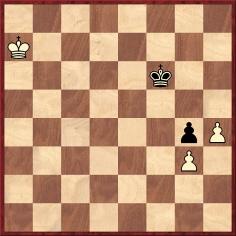
54...Ke7! (distant opposition) 55 Kb6 Kd6 56 Kb5 Kd5 57 Kb4 Kd4 58 Kb3 Kd5.
The above article originally appeared at ChessBase.com.
José de Jesús García Ruvalcaba (San Diego, CA, USA) asks whether there is any hope of finding the full score of the Capablanca v Kalantarov game.
(11549)
The first part of the endgame:
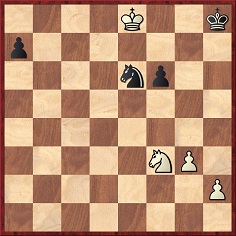
1 Kf7 Ng5+ 2 Nxg5 fxg5
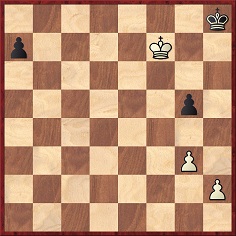
This second diagram was given on page 196 of The ChessCafe Puzzle Book by Karsten Müller (Milford, 2004), and the detailed solution on page 285 began:
‘3 g4!! ... Black is now lost in all variations ... 3 h4? is the wrong way to implement the breakthrough because of 3...g4!’
Karsten Müller also pointed out those options in C.N. 2402.
José de Jesús García Ruvalcaba draws attention to pages 147 and 150 of volume five of the Encyclopedia of Chess Endings edited by A. Matanović (Belgrade, 1993):
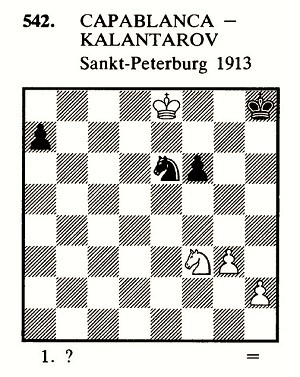
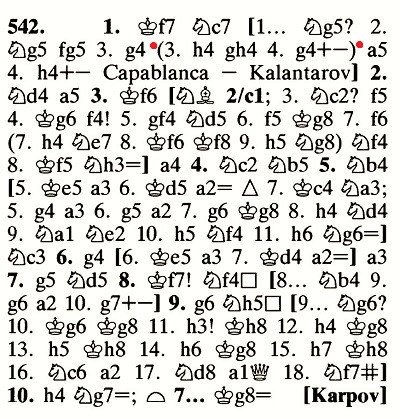
The question is whether Karpov really made the highlighted assessment, with no mention of 3...g4.
Mr García Ruvalcaba is attempting to trace biographical information about Kalantarov and reports that a player of that name was in a crosstable of the 1920 Petrograd championship on page 2 of the 1 May 1921 issue of Листок шахматного кружка Петрогубкоммуны (Listok shakhmatnogo kruzhka Petrogubkommuny):
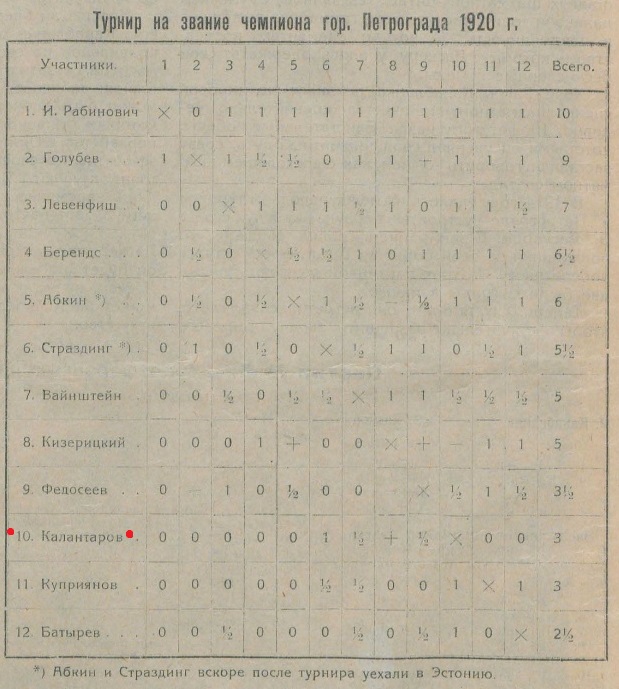
Vitaliy Yurchenko (Uhta, Russian Federation) sends the full article by P. Romanovsky on pages 180-182 of the 6/1959 issue of Шахматы в СССР:
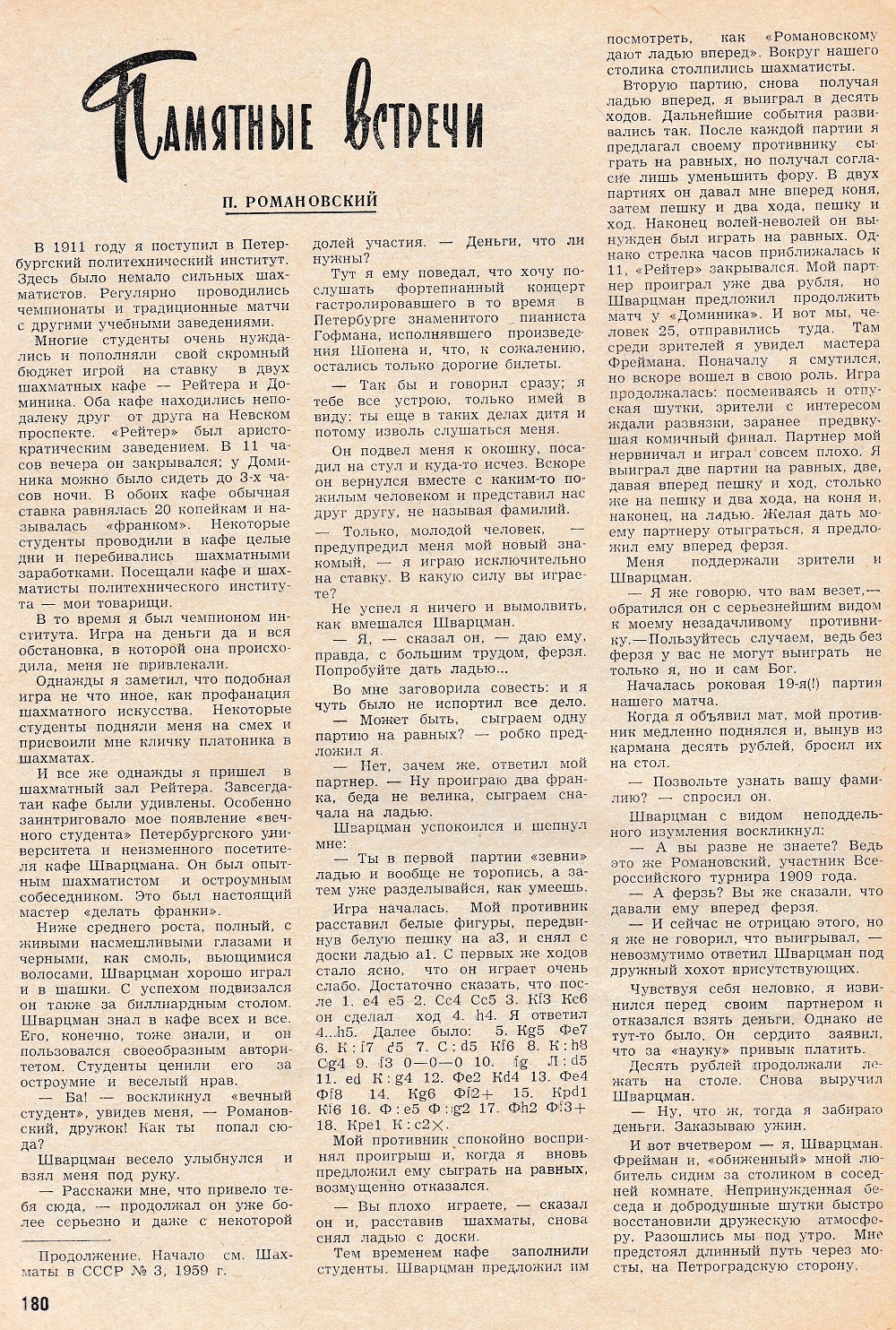
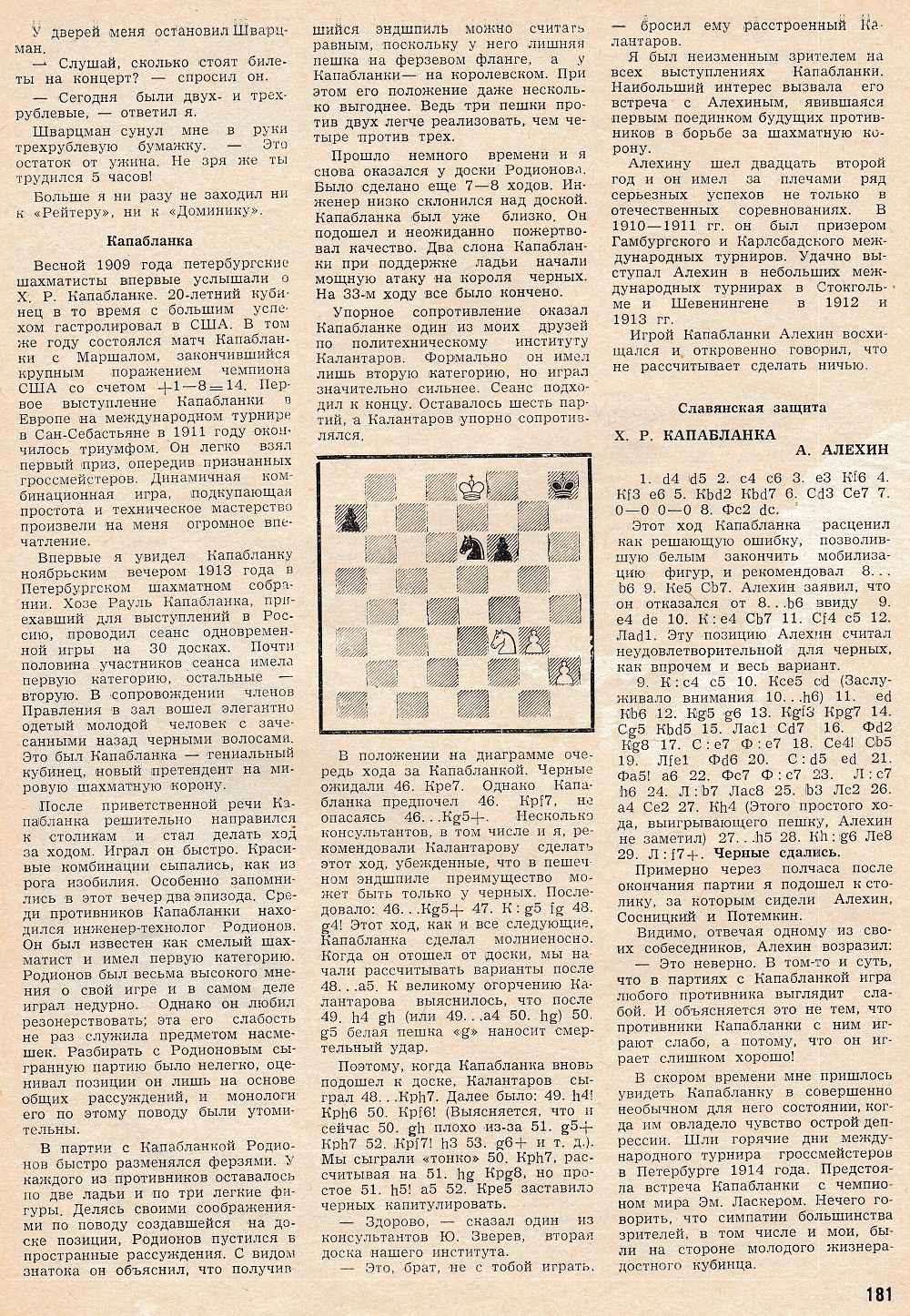
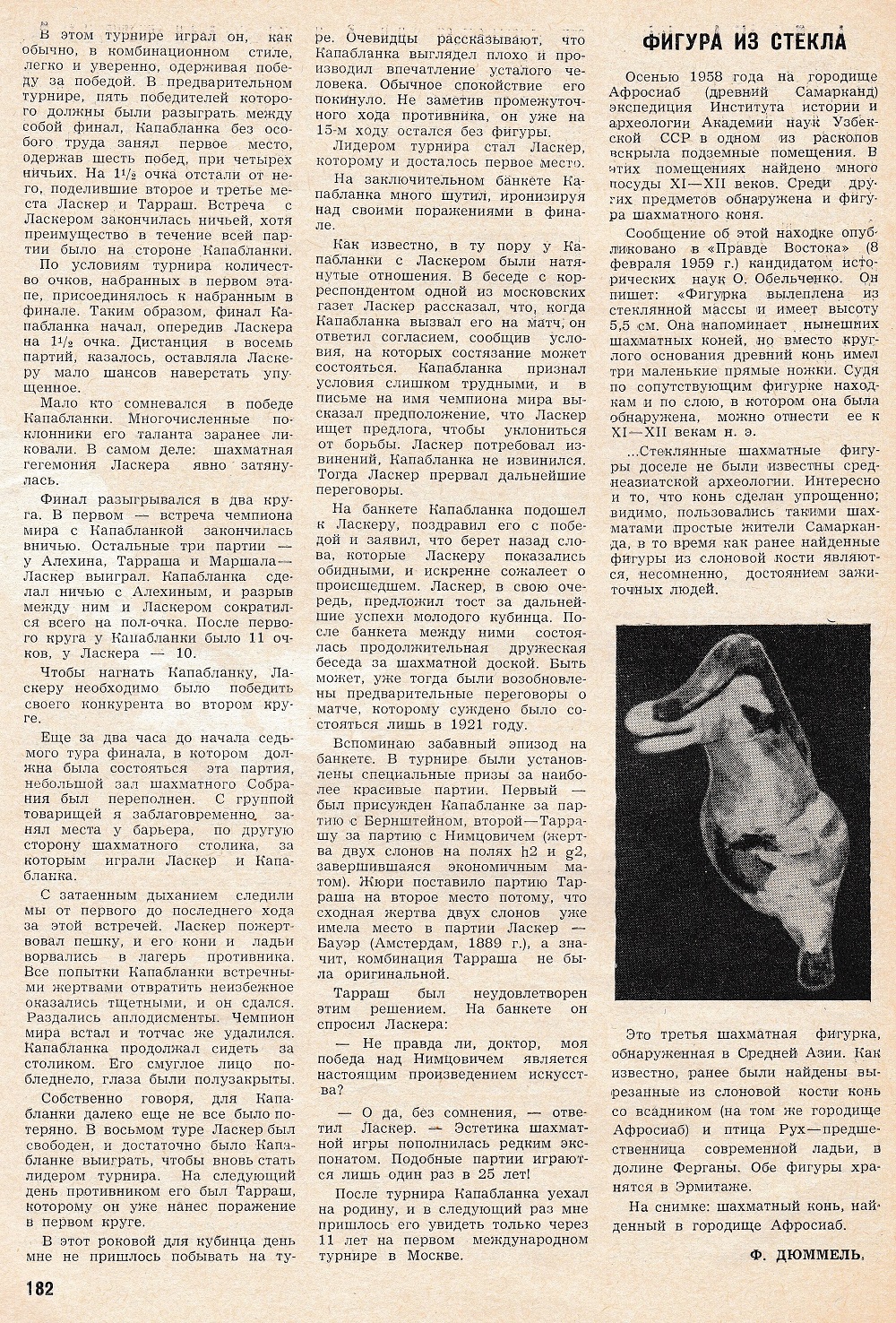
(11605)
Mr Yurchenko has also noted two occurrences of Kalantarov’s name in Шахматный вестник, 1914:
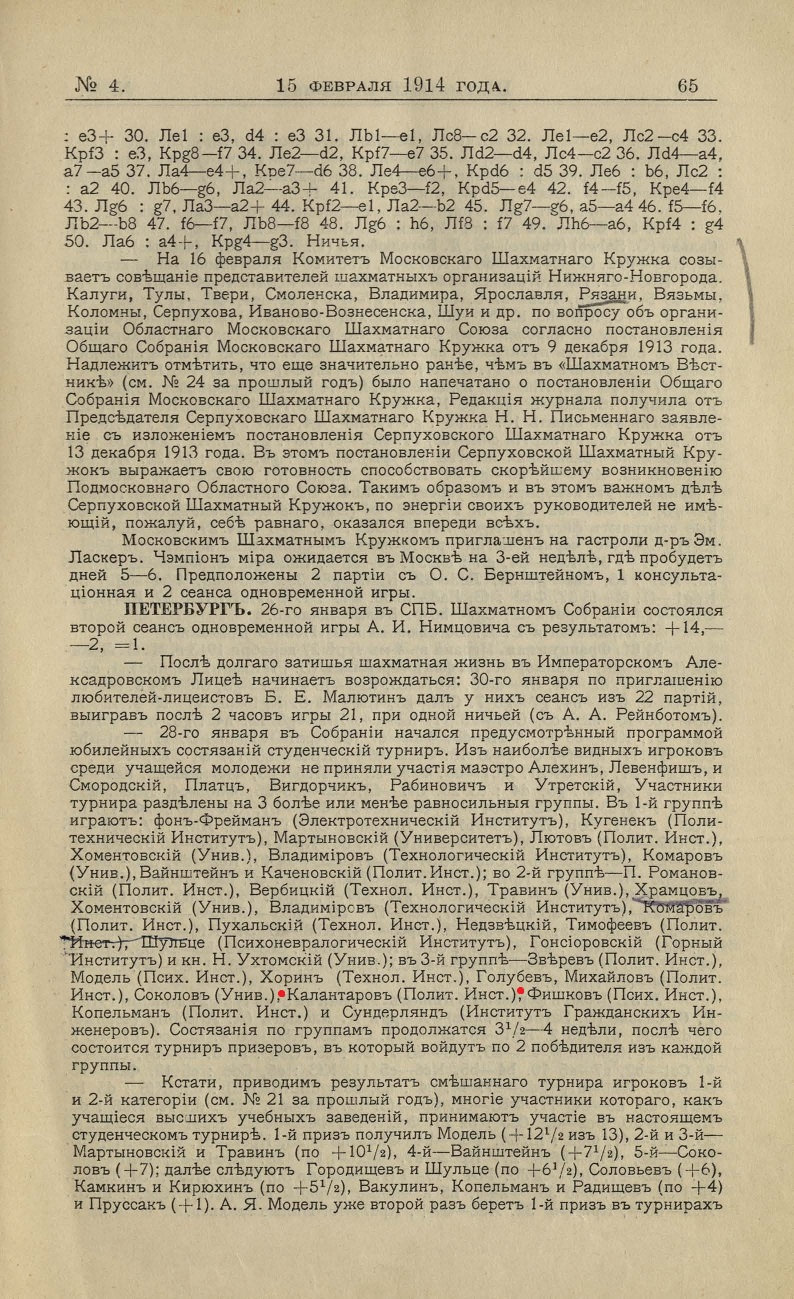
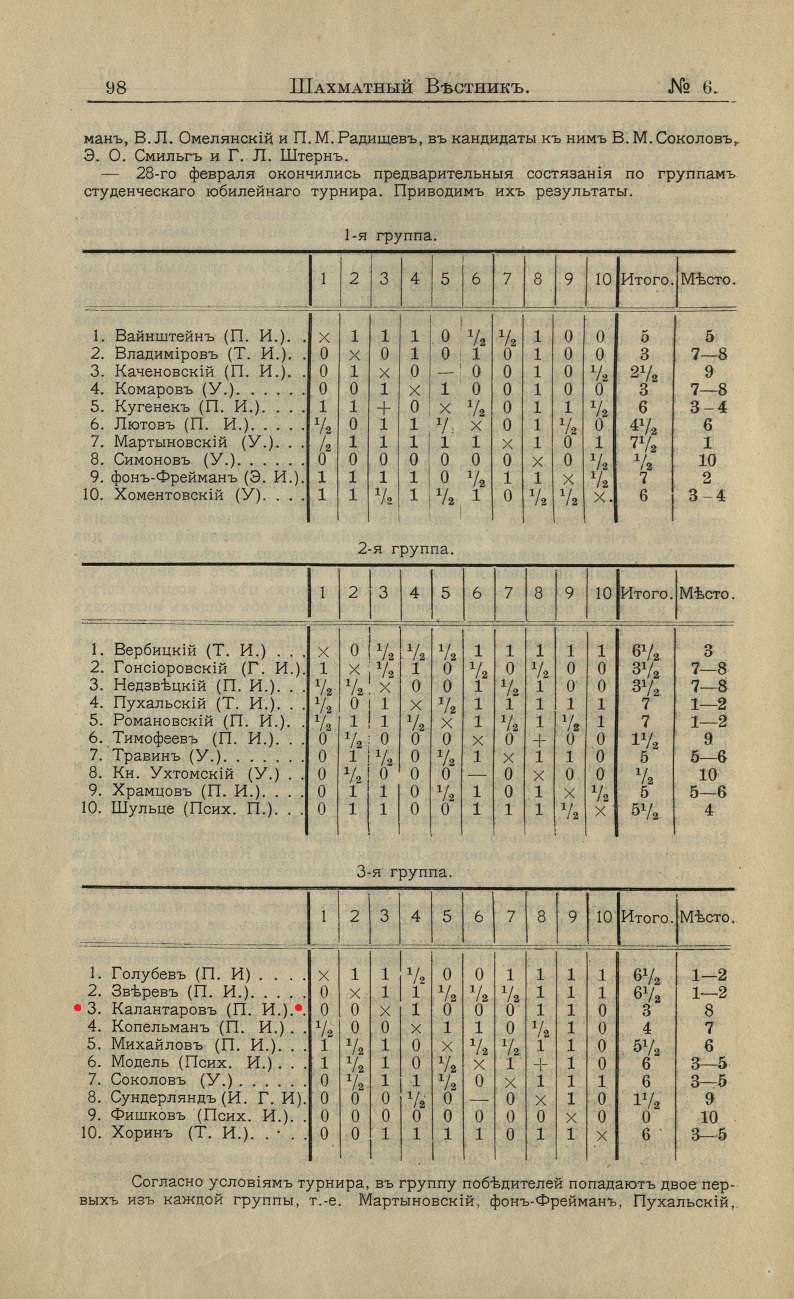
To the Chess Notes main page.
To the Archives for other feature articles.
Copyright: Edward Winter. All rights reserved.